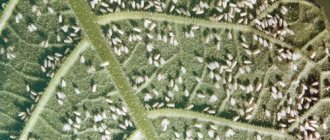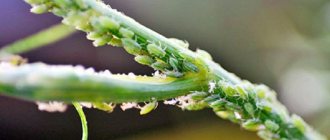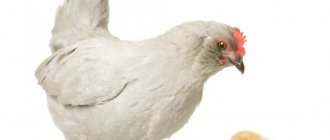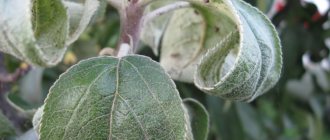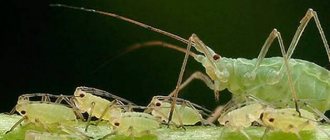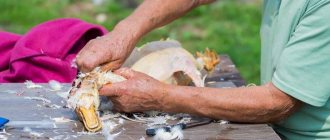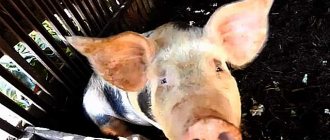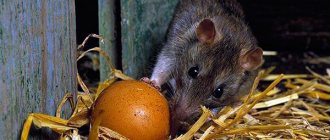Today, websites for gardeners are full of headlines that promise to get vegetables and herbs sprouting in the shortest possible time. What seems especially interesting is the method of processing dill so that it sprouts roots and leaves within 3 hours after planting. Whether it’s a joke or reality – let’s try to figure it out together.
What to do to make dill sprout quickly
Preparation of planting material begins a week before planting. Treatment is carried out for rapid germination and disinfection to get rid of pathogens of viral and fungal diseases.
Let's look at what the seeds are soaked in before planting.
Water
Place a cotton cloth or gauze on the bottom of the plate, sprinkle seeds and fill with filtered water. The liquid temperature for heat-loving varieties should be 20–25 °C, for others - 15–20 °C.
The water must be changed every 4 hours. During soaking, the seeds should just swell. Once 1–1.5% of the seed material has hatched, the process is complete. Shoots from such seeds appear 2-3 days earlier than when sowing dry ones.
Growth stimulants
For soaking, products containing magnesium, iron, copper, boron, molybdenum, zinc and cobalt are used. Stimulants promote the growth process and awaken the embryos. Disinfected and heated seeds are soaked in a solution, then dried, but not washed, and planted.
The most commonly used growth stimulants:
- " Zircon " is a biological product with systemic action. Activates germination and germination of seed material, increases productivity.
- " Fitosporin " is a systemic fungicide. Suppresses the proliferation of fungi and bacteria.
- " Kornevin " is a biostimulating drug that contains indolylbutyric acid.
- " Epin " is a natural bioregulator, growth and development stimulator, containing epibrassinolide.
Vodka
40% vodka not only dissolves essential oils, which promotes rapid germination, but also disinfects seeds. To do this, planting material is placed in cotton cloth and dipped in vodka for 15 minutes, no more.
Wood ash
The action of the solution is based on the high content of microelements, in particular potassium and calcium. Before soaking, prepare a solution: 2 tbsp. l. ash is poured into 1 liter of water and left for 2 days, stirring occasionally. Dill seeds are placed in the strained solution in a fabric bag for 4-5 hours.
Herbal infusions
Pour 1 tsp into a cup. chamomile, pour boiling water (90–95 °C), cool to 50 °C and soak the seeds for half an hour. You can also use aloe juice: dilute with water 1:1 and place the planting material in the infusion for a day.
This is interesting:
Areas of application for dill umbrellas.
A tasty and healthy way to fight excess weight: dill for weight loss.
Germination time of dill at home on the windowsill
At home, the crop is grown for constant consumption of fresh greens. Unlike natural conditions, home cultivation can affect the germination period and yield of the crop. If dill receives enough light, then at a room temperature of about 20 degrees and good soil moisture in the container, it will sprout in 10-13 days.
Due to the inability to grow leaves instead of cut ones for a permanent harvest, it is recommended to sow dill every 10-12 days in a container on the windowsill.
When growing indoors, it is not so much the germination time of dill that is important, but the lush mass of greenery. Experts do not recommend choosing early-ripening crop varieties in order to achieve early germination. It is better to choose late-ripening species that will hatch a few days later than their early counterparts, but will provide rich foliage instead of long stems.
Disinfection
After soaking, the seeds must be pickled:
- To prevent diseases, swollen seeds are placed in a bright pink infusion of potassium permanganate for 20–30 minutes.
- Hydrogen peroxide has bactericidal properties. The seeds are placed in a 3% peroxide solution for 5–10 minutes.
- Treating seeds with the universal fungicide “Fundazol” protects the crop from many diseases. The solution is prepared in accordance with the instructions.
After treatment with fungicides and stimulants, the seeds are washed and dried until they flow.
Soaking rules
Seeds for calibration are poured into a bowl of water. Those that are unusable or empty will float and remain on the surface. They should be drained along with the water. The seed that ends up at the bottom remains there for about an hour. The remaining water is drained, and the seeds should be soaked in a 3% hydrogen peroxide solution for 5–7 minutes. There is no need to pour a lot of liquid; it is better to wet the cloth. Water for this procedure must correspond to a temperature of +25…+30°C. 3-4 times a day it is necessary to wash the seeds without removing them from the fabric to remove essential oils. To speed up germination, the fabric along with the seeds can be placed in a plastic bag and kept in a warm place for 3 days, but no more.
When will dill sprout after planting?
The first sprouts of dill, the seeds of which have been germinated, appear after 7-10 days.
Let's look at how to speed up germination. There are several factors influencing the process of seed germination:
- Warm . In warm weather, seeds germinate much faster than in early spring. At an air temperature of 20 °C, the first shoots may appear within 4 days.
- Regular watering . Lack of watering in dry weather delays the process.
- The planting depth should not be more than 2 cm.
- Another important factor is the composition and structure of the soil . Neutral, loose soil is considered the best option.
Choosing the best variety
Dill has many varieties, which are divided into early-ripening, mid-ripening and late-ripening.
The most common varieties:
- Umbrella - does not have pomp, but is distinguished by early ripening and resistance to cold;
- Brawler — bush selection variety, medium late, gives an excellent harvest;
- Firework - bush, late ripening;
- Kibray - one of the new varieties, late-ripening, heat-loving, and sensitive to low temperatures.
Early and middle varieties are suitable for planting and give an excellent harvest in any region.
Advice from experienced gardeners
To ensure that your garden has its own dill all summer, experienced gardeners recommend planting it in stages.
The first sowing can be done in April, after the snow has melted, on beds prepared in the fall (with added organic and mineral fertilizers). In the northern regions a little later, in May. These seeds do not need to be germinated; washing is sufficient. If seedlings emerge too early, they will suffer from spring frosts.
The second planting is carried out in August with seeds with preliminary soaking so that the dill has time to reach commercial ripeness.
Starting from the first spring planting, every 3 weeks a new batch of dill is sown with sprouted seeds. When one batch enters the flowering phase, the other begins to gain green mass, and so on until autumn.
In November, dill is planted before winter. Seeds for winter planting are not germinated or watered after planting. Winter dill produces its first harvest 1-2 weeks earlier than the first spring sowing.
Germination of seed material - what is it and why is it needed?
Fast-germinating seeds do not need additional stimulation . But dill seed takes a long time to germinate, and in order to avoid unexpected surprises in the form of delays, it is better to promote its germination in a timely manner.
The preliminary germination procedure allows you to realistically estimate the percentage of germination. Often, when dry sowing directly into the ground, “bald spots” appear on the beds - places where the seeds never sprouted.
From already germinated seeds, you can choose the largest and strongest sprouts, characterized by strong immunity. A plant grown from such a seed will more steadfastly survive possible weather problems in open ground, and will also be able to more effectively resist diseases and pest attacks.
Cutting greenery
You can start cutting dill branches from the moment it reaches a height of 15-20 cm. After the plant produces a peduncle, it is cut off completely. Excess can be dried or frozen.
A prepared article will help you learn more about growing dill on a windowsill in winter.
Growing dill in an apartment in winter is quite simple. But this will require free time and a desire to take care of plants. Then the spice will definitely delight you with its fresh taste and bright aroma. And it will replenish the supply of vitamins and microelements in the body during the long winter.
How to plant dill in July so that it sprouts quickly. Growing lush greens
Dill contains many vitamins, calcium, iron, sugar, proteins, essential oils and other substances beneficial to our health. I use dill in preparing summer salads and adding it to soups and side dishes. I also dry young greens for the winter, and add flowering dill to pickles. Since I use a lot of dill, I plant it several times a season. I’ll tell you more about planting dill in July.
Why does a plant die and how to prevent it?
There are two main reasons for the death of dill after germination. And both of them are associated with improper watering:
- Plant death from the disease “Blackleg”. With this disease, sprouts rot near the soil and fall. As a rule, it is not possible to save them.
- Overdrying of the soil. It only takes 3-4 hours for a dill sprout to die in dry soil.
It’s not at all difficult to obtain high-quality dill shoots; you just need to remember to follow some rules. A competent choice of variety, timely planting, simple care - and throughout the year a fragrant and healthy spice will be on the table.
Extra comfort
Just proper soaking is not always enough. It is important to meet a number of other conditions so that the greens do not “be capricious”:
- When soaking seeds, add microelements or growth stimulants to the solutions, which include boron, iron, magnesium, copper, molybdenum, cobalt, zinc.
- The site should be sunny and the soil should be well heated.
- If it is still cold, then you need to plant under film, which is used to cover the area a couple of weeks before planting so that the soil warms up.
- A couple of days before planting the seeds, add humus or a little mullein to the soil, plus add a handful of ash - the crop loves alkaline soil.
- Water regularly and abundantly.
Good germination of dill depends on various factors. It is very important to properly prepare green seeds for planting. However, preparing the soil and caring for the seedlings are no less important so that the harvest does not take long to arrive.
What to soak seeds in
You don’t have to worry about preparing the liquid and use regular tap water. However, many experienced gardeners still recommend using melted, spring or purified water for this purpose.
Growth stimulants
Today, there are several ready-made growth stimulants that can be purchased in the store:
All of them are of plant origin and are designed to accelerate not only the growth of plants, but also the germination of germs.
Herbal infusions
In the absence of ready-made drugs, you can use home remedies. They are prepared from raw materials of medicinal plants in the form of strong infusions and decoctions. The following can be used as a basis for preparing the solution:
Wood ash
As you know, this simple fertilizer is an excellent source of microelements. They are exactly what is needed at the moment when the first sprout gains strength. To prepare the solution, wood ash is poured with water in a ratio of 2 tablespoons per liter of water. Leave for two days and then filter through cheesecloth. The filtrate is used to soak the seeds.

